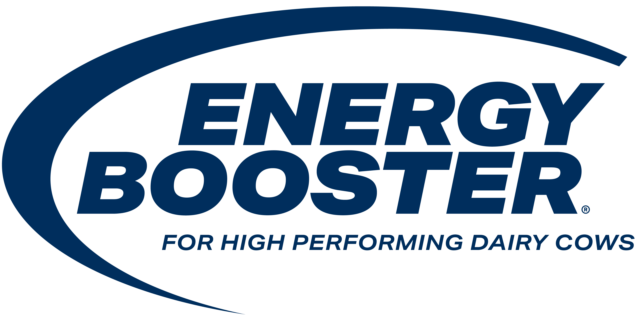Not many organizations, or couples for that matter, get to celebrate a 75th or “diamond” anniversary. But in Thornton, Colorado, this June, appropriately during “Dairy Month,” the Western Dairy Association (WDA) will celebrate 75 years of regional dairy farmer-directed promotion, research and nutrition education.
This signature milestone marks the accomplishments and leadership of dairy farm families in Colorado, Montana and Wyoming. “We are honoring tri-state dairy farmers – and those pioneering Rocky Mountain men and women who established the first dairy farms back in the late 1800s – as visionary leaders in the regional food community,” says Cindy Haren, chief executive officer of the WDA.
“For more than seven decades, a relatively modest number of dairy farm operations have provided our growing urban centers with a steady supply of fresh milk and dairy products,” she adds.
“By working together through the checkoff, these farm families have helped to direct some truly impressive initiatives that – over time – have created awareness, built new food channels, developed retail and processor partnerships and fostered nutrition education and school program efforts that directly benefit millions of people.”
A 75-year legacy
The 75th anniversary of WDA is a historic moment. With roots tracing back to 1936, WDA got its start when dairy farm families formed the Denver Dairy Council. Its mission was to educate consumers about milk’s value in a balanced diet.
Over the years the names have changed as well as the structure and reach of WDA’s predecessor organizations.
For instance, in the 1970s the American Dairy Association (ADA) of Colorado, the advertising and promotional arm, expanded its reach and was renamed Goddess of the Rockies Milk Inc. (GRMI). As a member of United Dairy Industry Association (UDIA), GRMI participated in national and local ADA, the National Dairy Council, and DRINC programs.
“Probably the biggest change is that, just 15 years ago, on the national level we saw two separate organizations – UDIA and the National Dairy Board – come together to form DMI (Dairy Management Inc.)."
"That was a huge step for efficiency and leveraging dairy farmer dollars … We now operate under a single unified marketing program with one CEO and one vision. It’s effective and efficient,” says Les Hardesty, dairy farmer and WDA board member from Windsor, Colo.
That “coming together” ultimately triggered changes across state and regional promotion organizations like WDA, says Hardesty, who also serves as chairman of U.S. Dairy Export Council.
By 2007, WDA had merged all of its efforts under one name and mission, also aligning with DMI’s unified marketing plan.
2011 WDA
Today, on a grassroots level, WDA represents the interests of more than 180 dairy farms, which contribute over $1 billion across three state economies and supply more than 3.23 billion pounds of milk annually.
In Colorado alone, WDA reaches 2.3 million consumers a year. On a broader scale, as a member of the dairy checkoff network led nationally by Dairy Management Inc., WDA and the other state and regional dairy promotion organizations have helped to positively affect consumer awareness.
Since the dairy checkoff began in 1983, national annual consumption of total milk has climbed nearly 16% to 605 pounds per capita (total milk is the milk that goes into all dairy products).
“As a dairy farmer, I’m really proud of our work. We are focused on bringing consumers the kind of products that fit their lifestyles,” says Brad Pickert, Sr., dairy farmer of Berthoud, Colorado, and chairman of WDA’s dairy farmer board of directors.
“The checkoff is dairy’s only concerted effort to find ways to develop and improve markets for milk and milk products. As dairy farmers, if we want markets, we must develop them and then be able to supply that market with high-quality milk. And we need to do that with great care and pride,” he adds.
Changing the conversation
According to WDA’s dairy farmer leaders, the 75th anniversary not only recognizes past achievements for regional promotions, it creates new opportunities to talk publicly about the values that local dairy farmers bring to consumers and the benefits the checkoff creates for dairy farmers.
Earnie Makita, dairy farmer and WDA board member of Calhan, Colorado, notes: “The dairy checkoff has been a very valuable tool to keep the public informed of the value of milk in the food chain – especially the importance of milk as a nutritious and safe product.”
While the checkoff’s goal is to adapt with the changing times, one thing won’t change – the focus on nutritional values and health and wellness.
“The thing I’m most proud of is that dairy farmers have been committed to nutrition education for almost a century,” says Hardesty. “Looking ahead, what will not change is our focus on youth and young adults, because they are our future."
"If we help solve the child wellness issues, we can introduce them to the important role dairy products play in good nutrition and, at the same time, help them to be lifelong, educated dairy consumers.”
Handshake power
Relationship-building with food and business leaders is, also, something that will never go away. Dairy farmers understand the power of a handshake.
In a business that relies on people-to-people power and teamwork, those values are intrinsically embedded in the process of dairy farming.
A three-year partnership in Colorado provides a keen example.
Last year WDA celebrated the results of a farm/school/processor/retail partnership that benefited a school food service program.
Douglas County schools in Colorado teamed up with WDA, Dairy Management Inc., Domino’s Pizza and Leprino Foods to formulate, test and develop a fresh, new pizza menu item that would meet student approval ratings, target the lower fat standards for the school lunch program and add efficiency to school food service. This is just one of many partnerships.
“In the early years of the dairy checkoff, the focus was on advertising. This was expensive with limited measurable results. During the last several years, the focus has changed to forming partnerships with influential and prosperous businesses and other entities,” says Arley George, WDA board member and dairy farmer from Cody, Wyoming.
“Today, the dollars we spend with these partners in product development, advertising and promotion are returning huge, measurable returns. Typically, every dollar we invest is matched by $5 or $6 invested by our partners. As our partners prosper, we prosper,” says George.
Rebalancing food conversations
Facing future challenges, dairy farmers in WDA’s region say that, perhaps, one of the greatest opportunities remains with consumers and adding balance to the public conversation about food and farming.
While DMI’s Telling Your Story (TYS), dairy image and social media programs are well under way, finding new meaningful ways to interact with consumers remains an enormous challenge – especially as dairy farm numbers decline with each generation.
Chris Kraft, dairy farmer and board member from Fort Morgan, Colorado, says that more than ever before, dairy farmers need to tell their story to a consumer who has never visited a farm but is interested in food and influenced by many different non-farming voices.
“No one will tell our story as well as we can – whether it is about the outstanding nutrition that we bring with milk or the value of our dairies in the American landscape and rural communities. The dairy checkoff is our voice,” says Kraft.
In the changing social media environment, he says the industry will continue to spend time and energy to reach consumers and promote and protect the good reputation of the dairy industry.
Mike Faulkner, dairy farmer and WDA board member from Greeley, Colorado, agrees.
Contemplating WDA’s 75th anniversary year, he reflects on the importance of dairy farmers working together over the years to ultimately develop a strong and shared voice as well as a unified organization and program.
“When the industry faces a dairy issue, we have the right messages, the right process and the right people in place to deal with it. And someone is protecting my (dairy farmers’) interests. That’s critical in today’s environment,” he says.
And it helps dairy farmers sleep better at night.




